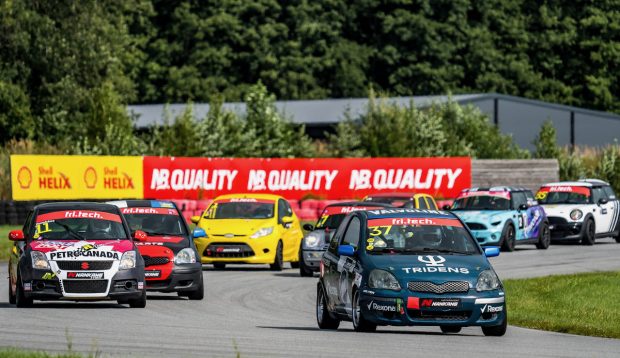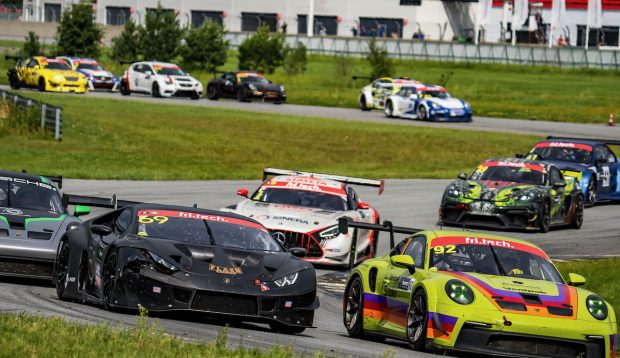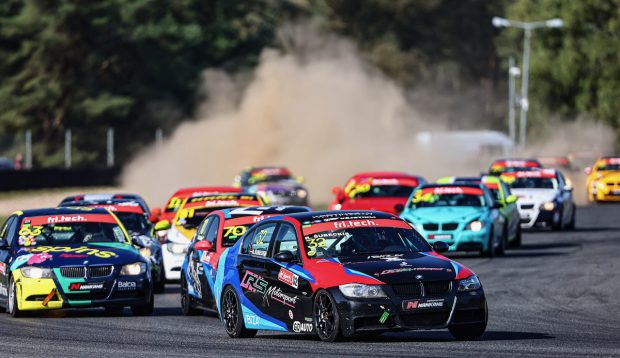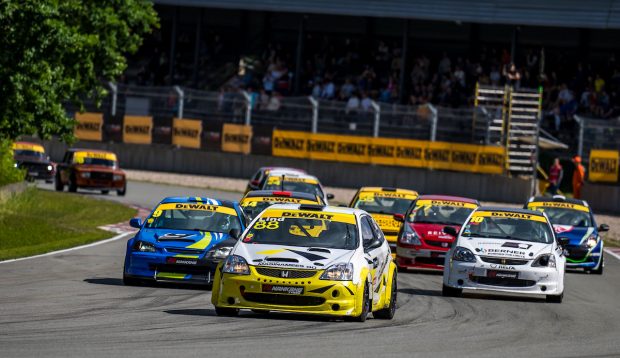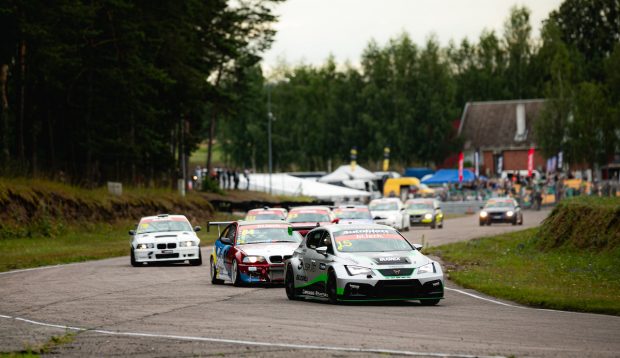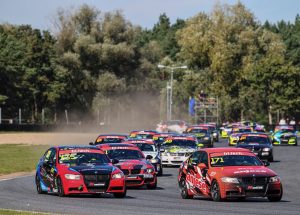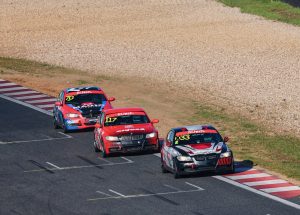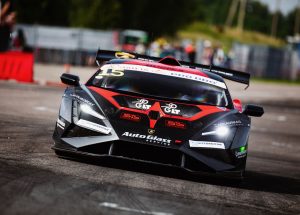Baltic Touring Car Championship Ready for the Season with Exciting Updates
The new season of the Baltic Touring Car Championship brings various changes and additions aimed at further increasing the number of participants. The season will kick off with Stateta Bro Grand Prix 2025 early May at the “Nemuno Žiedas” circuit in Lithuania, followed with second round on June 6–7 at the Biķernieki circuit.
“We continue to develop the Baltic Touring Car championship with the goal of making the competition accessible to everyone—both for participants in budget classes with the lowest possible costs and for those who want to compete with modern, factory-built cars. This year, we will also continue our successful collaboration with the Polish WSMP championship. Last year, the Polish racing series visited Pärnu, and this year, on June 6–7, we will see Poland’s fastest touring car drivers in Riga. Just like last year, we will make a return visit to Poland for the season finale,” explains BaTCC race organizer Andis Meilands. Overall, the season will consist of six rounds—two in Latvia, two in Lithuania, one in Estonia, and one in Poland.
In Riga race, where WSMP will join, there will be three races for classes that will go together with Polish series, and the same applies to the event in Poznan. Also, the race distance is now changed to minutes from laps to ensure more predictable schedule adjustments in the sad case if major crashes happen. Also, the penalty points and racing discipline regulations are adjusted to have more understanding of penalties. As the inflation doesn’t stop and all the necessary infrastructure is getting more expensive, to ensure at least the same quality of the event the entry fees will be a bit higher aswell.
Sprint classes
The highly popular and competitive “BMW 325 CUP” class has seen no significant changes in technical regulations. Over the past five seasons, there has been a different champion each year, and this is likely to be the case again this year, as reigning champion Ričards Šubeckis has announced that he will not compete in sprint races, leaving the champion’s throne up for grabs. Will it go to last season’s runner-up Matīss Maļinovskis? Or perhaps a competitor from Lithuania or Estonia? Several Polish drivers are also expected on the starting grid, as interest in this class is very high in Poland, with many cars from the Baltic states being sold there.
A new single-make class has been introduced in the championship structure—the “BMW Turbo Cup.” This class follows a concept similar to the “BMW 325 CUP,” allowing only BMW “G20 330i” model cars with 2.0L turbocharged engines producing 260 horsepower, identical engine and transmission control programs, and a standardized braking system. At present, Lithuania is expected to have as many as 6–8 car, while three cars are being prepared in Latvia. At the season-opening race, at least 5–6 competitors with fully prepared vehicles are anticipated.
In the budget class “ABC Race” for cars with engine displacements up to 1400cc, there are no major changes to the technical regulations. However, activity during the winter suggests an increase in the number of participants and exciting battles on the track. In the “V1600” class, also for cars with up to 1600cc engines, adjustments have been made to the power-to-weight ratio, further balancing vehicle performance and expanding the range of eligible car models. Last year’s “ABC Race” champion, Nauris Agafonovs, will move up to the “V1600” class, where he will race alongside Baltic vice-champion Viesturs Ozols and Latvian Cup winner Arvīds Rumbēns, as well as several new drivers from Latvia. Both of these classes hold Latvian Championship status and will not be included in the Polish round; instead, they will have an additional event in Biķernieki.
The “GT” classes are expected to bring the usual battle of factory cars vs garage cars, making it a various field of cars for every petrolhead to be enjoyed. We can even see new supercar brands previously unseen in the BaTCC series. For the first time in many years aswell Kaunas “Nemuno Ziedas” race track will field the most powerful of cars, as the new asphalt and improved safety measures allows to do that. Particularly thrilling races we can expect in Riga as this time the races will also feature competitors from the Polish championship, which includes high-performance cars such as Lamborghini, Porsche, and Mercedes-Benz, ensuring spectacular and high-quality racing. Last year Poles were faster, how it will be in Riga?
In recent seasons, the “BTC2” class, designed for cars with engine capacities up to 2000cc, has experienced a revival. Last season, 15 different drivers took to the starting grid, but Estonian Simo Lind proved unstoppable, claiming his third title in four years. The 2022 champion, Atis Veismanis, plans to compete in several races this season. To predict a winner? Not easy, but easy is to pretend good fun on and off the track. A similar trend could be seen in the “BTC1” class, which includes cars with engines up to 1600cc. Significant activity is occurring in Lithuania, where the number of cars in this class is quite large and with additional interest and mor cars on the field, an increase in participation numbers is expected for the 2025 season. Minor technical rules changes have been made to facilitate the inclusion of LADA vehicles and their competitiveness against other class entries. This means that in addition to 2024 champion Māris Bulāns, and other Latvians Lelde Jukāma, and Valdis Kikusts, new competitors from Latvia are expected to join the class bringing the field up to notable and competitive numbers. “BTC3” class has struggled in two previous season, but the place doesn’t stay empty for long. And we are sure new challengers will rise up.
Endurance
All of the aforementioned classes can also participate in the two-hour endurance races as a team. This is an excellent way to share costs and the thrill of racing with another driver, competing in a two-hour-long race alongside other participants from their class and different categories. The technical regulations are identical to sprint races, allowing competitors to participate in both disciplines during a single race weekend.
The “Nankang 2h Endurace” has some changes, the bigger classes, including “GT AM” and “GT PRO” will use Hankook slicks and will be part of “Hankook endurance challenge”, while powerful classes like “ABC Race”, “BTC1”, “BTC2”, “BTC3”, “BTC4” and “BMW 325 CUP” must use “Nankang” semi-slick tires, while “GT AM” and “GT PRO” classes must use “Hankook” slick tires.
If the amount of participants is big enough, the cars might go in two different races, splitting the grids in smaller sizes. Similar as in last season, the 2h endurance race is expected to be the last session of the racing event in the timetable.
The Baltic Touring Car Championship (BaTCC) unites touring car drivers from the Baltic states and neighboring countries under one racing series, incorporating the national championships of Latvia, Lithuania, and Estonia, ensuring a high level of organization and competition. The championship offers racing classes for cars with engine displacements up to 1400cc, 1600cc, 2000cc, 3000cc, and 4000cc, as well as the single-make “BMW 325 CUP” and high-performance factory-built racing classes. Competitors can take part in sprint races (15–20 minutes in length) and two-hour endurance races.
Registration for season and for the first championship event in Kaunas is open on the website.



